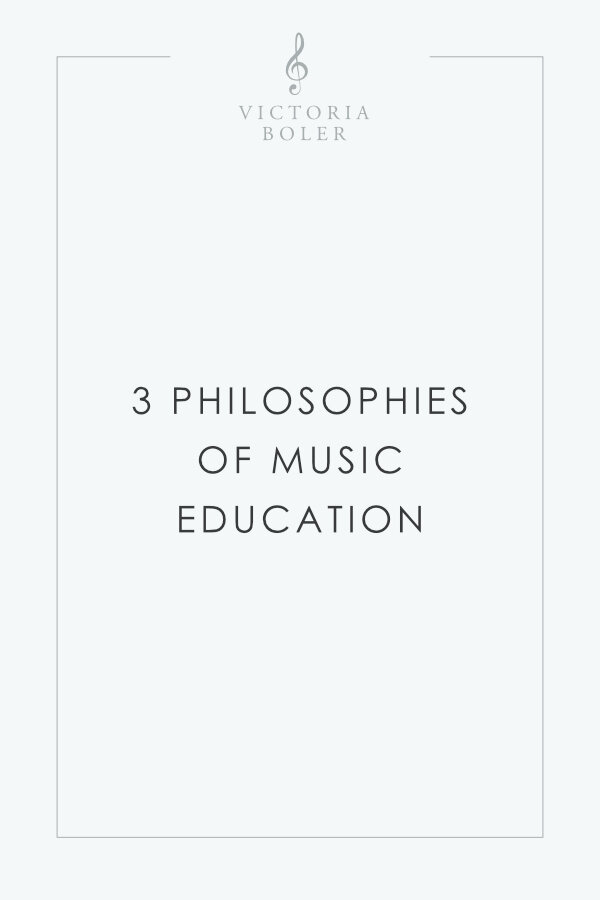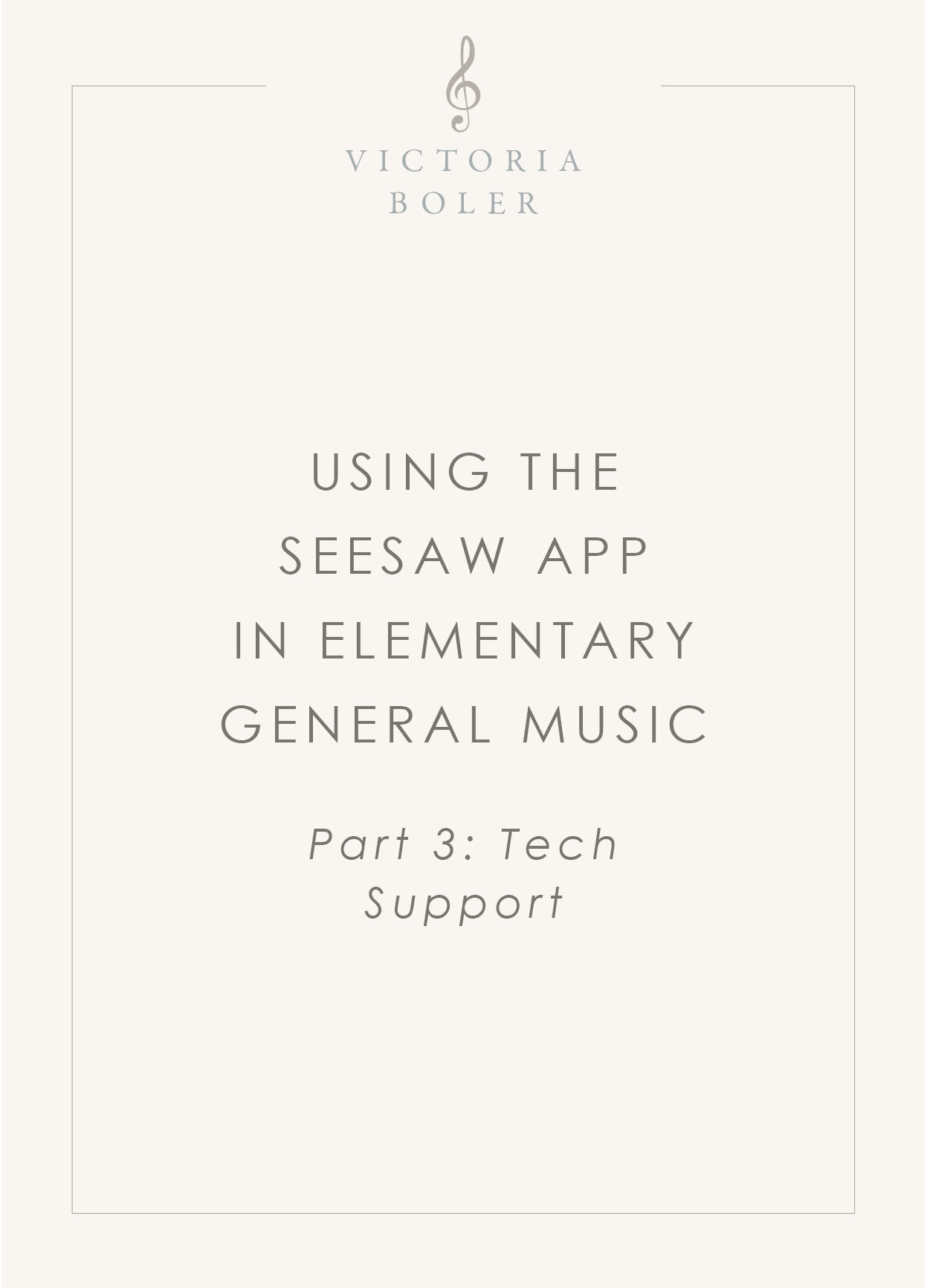We each have a story about why we were drawn to music, why we were drawn to education, and why we were drawn to the elementary age group. There is a philosophy behind each aspect of our role:
Elementary: What is the importance of childhood?
Music: What impact does music have on our lives?
Educator: What does quality education look like?
The way we view each of these pillars shapes our curriculum, our classroom management, how we assess, and how we discuss our mission with administrators, parents, the community, and our students. Knowing how music scholars articulate their value systems can bring clarity to conversations with administration and community members as we work to bring high quality music education to our students.
Today we’ll look at three philosophies that articulate the value of music.
These three do not summatively describe every viewpoint that exists in the music education space.
I’m also not suggesting that we align ourselves with one single philosophy as the defining set of statements about our music programs. The purpose of these philosophies is not to put our beliefs in a single, neatly packaged box. Rather, it is to equip us with a framework and vocabulary that we can use to advocate for our programs and support our students.
Let’s jump in!
The Utilitarian Philosophy of Music Education
The Utilitarian Philosophy is centered around the idea that music education is practical.
A few key ideas of utilitarian music education:
Music serves a function. It is a tool we can use to achieve a purpose.
For example, we may advocate that strong music programs are related to strong academic performance, such as increased SAT scores. We may argue that music serves to build “character education,” patriotism, and school values. We may show how music improves the brain and helps language development.
Music serves a non-musical outcome
You may have noticed something from the examples above: None of them have to do with musical growth. The utilitarian music philosophy promotes music for the purpose of achieving an outcome outside the musical realm. For example, educators who use this philosophy do not state that students who study music will improve their rhythmic and melodic skills. Instead, they might focus on improved science and math scores.
A very quick background of the Utilitarian Philosophy
In 1838, for the purposes of improving singing in Christian church congregations, music was added to the public school system in Boston. Further, the school board agreed that adding music in schools would promote Christian morals, improve physical health, and increase students’ intellectual capabilities. In other words, music was included in schools to achieve a very practical purpose. This is the practical music philosophy we refer to as “Utilitarian.”
The Utilitarian Music Philosophy in Advocacy:
Today this philosophy is alive and well, and is used by NAfME, VH1 Save the Music, and NAMM. We see it on posters, on bulletin boards, and doors:
Music is
Math
LangUage
HiStory
ReadIng
SCience
As music teachers, the message we are trying to convey is that music education is important because it has a positive impact on many other subject domains or content areas.
If you view yourself as a teacher aligned with the utilitarian philosophy, you might highlight how students are working through mathematical, linguistic, or scientific concepts through your music lessons.
Some questions to consider before using this approach:
Does music serve a practical purpose?
Is that purpose enough to merit a place in school curricula?
Is music valuable in and of itself?
If we already have Math, Language, History, Reading, and Science, why do we need music?
The Aesthetic Philosophy of music education
The Aesthetic philosophy of music education is centered around the idea that music expresses emotion.
A few key ideas in Aesthetic Education:
Music for music’s sake
When studying music, students should engage in developing musical skills and understandings In other words, when studying music, students should learn music. Instead of learning music so we can be competent in other areas, we should learn music so we get better at music itself. The aesthetic philosophy is not primarily concerned with what functional value music offers. Instead, it views music itself as the value.
Feelings-based experiences
In the Aesthetic philosophy, when we hear music, we’re engaging in a feelings-based experience. Our feelings are subjective, but they can be traced back to specific structures or expressive elements in a musical work. When we study music, we are studying expressive sonic properties that convey an emotional message.
High-quality musical products
Music is something that expresses emotion. It is a thing, it is an output. A musical product is the vehicle we use to have these feelings-based experiences. Therefore, only the highest quality music should be included in a music curriculum.
A Very Quick History of the Aesthetic Philosophy:
As funding in schools moved away from music in the 1900s, the profession responded with a new focus of music instruction, one that centered on music itself. Bennett Reimer from Northwestern University was a key music philosopher in the development of Aesthetic philosophy. He believed that music education needed one unifying philosophy of teaching, learning, and advocacy so we could better position the role of music education in schools.
The Aesthetic Philosophy In Advocacy:
Followers of this philosophy would explain that music is an essential part of a child’s education because emotional and aesthetic education are essential to the human experience.
When we study music, we form self-knowledge and gain deeper access to our emotional lives. This kind of education that promotes an understanding of beauty, emotion, and expression is only possible through music.
If you, your administration, and your community value the aesthetic education students get through music education, your data may include qualitative evidence (like written student responses) of how students connected to beauty during distance learning.
Some questions to consider before using this approach:
Do I believe music’s core value is inside the music itself?
What are the qualities of beautiful music? Who (which culture, historical period, musical authority) decides?
Are aesthetic experiences valued by my administrator or school board?
The Praxial Philosophy of Music Education
The Praxial philosophy of music education is centered around the idea that music both artistic and social.
A Few Key Ideas of the Praxial Philosophy:
Music is the actualization (praxis) of a person’s belief systems and motivations
The practice - improvise, listen, perform, compose, arrange, or conduct - of music is where the value of music education lies. At their core, these are human activities. Human lives, thoughts, and actions are inherently valuable. Therefore, music is inherently valuable because it is the result of humans’ actionable beliefs. Music is multi-dimensional. It uses the cultural background of the piece, the musical traditions of a people, and the student’s own performance or listening interpretation.
Music is both a process and a product
“Music” is the thing we output as a complete work (product). Think about our description of “a piece of” music. It is also something we do, a process we experience, whether listening, performing, composing, arranging, or conducting. For example, in the case of musical performance, music happens both before a note is produced, as the producer imagines the sound. It happens in the moment the sound is made. It happens after the sound is produced as the producer critically reflects on the music. When music is process-oriented, students think, plan, make, and reflect on music holistically.
Music lives in a cultural and social context
Across cultural and historical contexts, music has meaning. This meaning is valuable in and of itself without superimposing standards of Western European art music. When we examine music from a wide range of cultural, social, and historical contexts, we are better positioned to recognize the value and meaning music brings.
A Very Quick History of the Praxial Philosophy:
The praxial philosophy is still quite new. In the 1990s, David Elliot (a former student of the key aesthetic advocate, Bennett Reimer) proposed that music is a human activity, not a purely aesthetic product. Elliot’s position was that the aesthetic philosophy is limiting, since music education at the time focused primarily on Western art music, and excluded global or popular music traditions. He also advocated for a music philosophy that included more participation rather than observation.
In addition to Elliot, music thinkers like Philip Alperson, Christopher Small, and Thomas Regelski have also impacted this approach to music education.
The Praxial Philosophy in Advocacy:
Music is worthy of study because human thoughts, voices, beliefs, and actions are worthy of study. When we study music, we teach students to become holistic problem-solvers, thinkers, and artists as they explore the process of musicing, and celebrate the resulting product. They are placed at the center of their own learning, as inventors, producers, and critics. Equally important, they learn how to invent, produce, and critique their peers in a way that honors the beliefs, value systems, and practices of our shared history, and the global community. No other subject synthesizes the value of the human experience, the process of learning, and the context of art in the way music does.
If your philosophy is praxial, you could collect artifacts (like videos or compositions) that highlight the process of learning music holistically.
Some Questions to Consider Before Using this Approach:
Whose music should be included in the curriculum?
Should music be taught as a noun or a verb?
In an American classroom, what are the implications of teaching music as a an expression of the values, beliefs, and traditions of a people?
How to Cite this Article:
Boler, V. (2020, July 13). Three philosophies of music education. Victoria Boler. https://victoriaboler.com/blog/three-philosophies-of-music-education
References and More Reading:
Musicians and thinkers have put lifetimes into developing these philosophies. It is impossible to do each of them justice here, so if these thoughts are interesting to you, I encourage you to check out some of the resources below.
James F. Daugherty on why music matters
Donald A. Hodges, A Concise Survey of Music Philosophy
Michael Mark, A Concise History of American Music Education
Michael L. Mark and Patrice Madura, Contemporary Music Education
Bennett Reimer, A Philosophy of Music Education
David Elliot and Marissa Silverman, Music Matters: A Philosophy of Music Education








